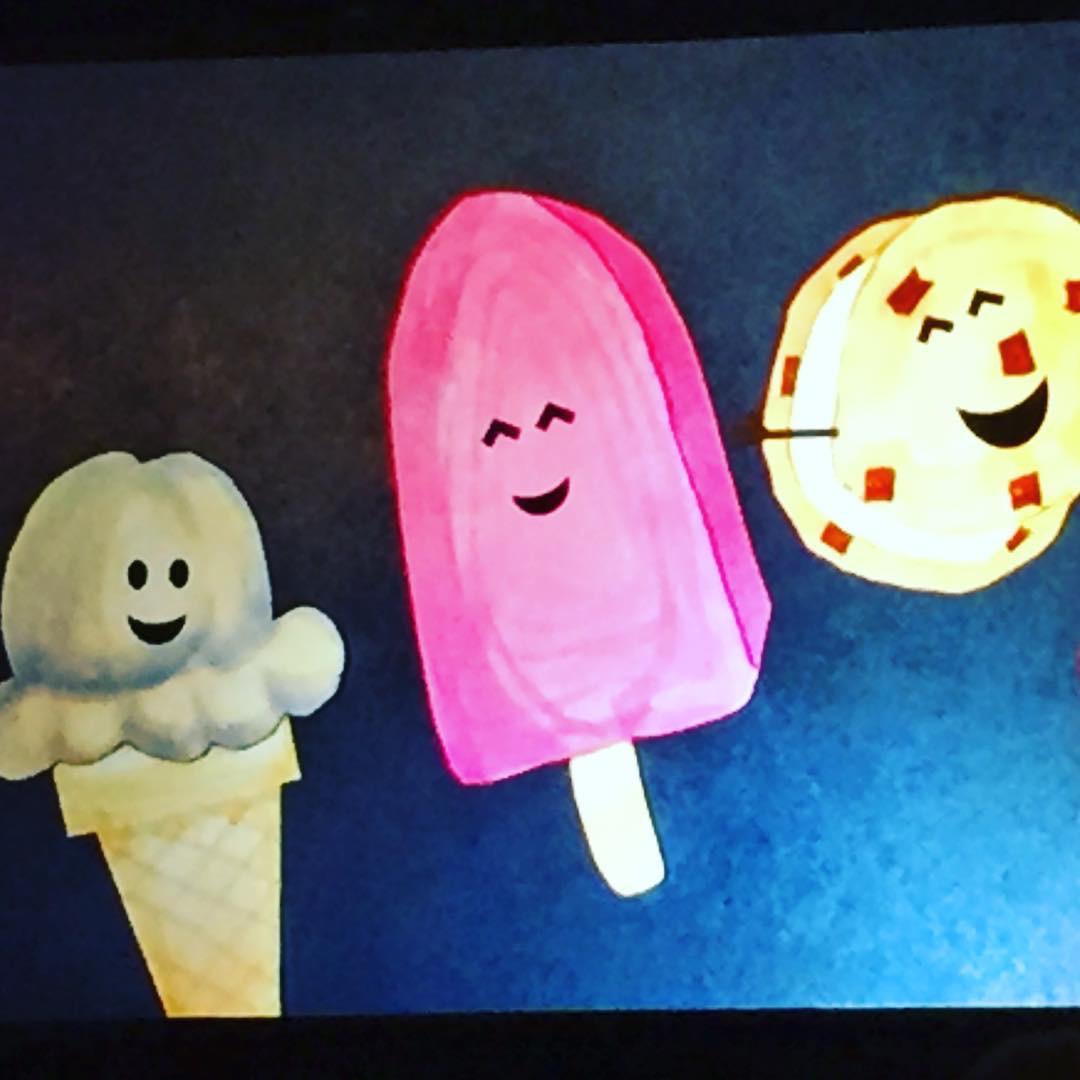“one of my anxieties about [Hidden Figures] is, people will walk away from it & situate it in the 1960s, not 2017” http://gizmo.do/qDuYhdS


plans to get a hashtag trending that would trick immigrants into admitting their status so they could be turned in: http://mm4a.org/2jgRAqx
“There’s a reason Trump keeps lying about voter fraud” http://wapo.st/2jnnmNF
a #sunrise #roadpic with #nofilter

yet another #nofilter #sunset #roadpic

signs from #womensmarch #womensmarchatx (2/2)

signs from #womensmarch #womensmarchatx (1/2)

This is it. January 20, 2017. I’m sitting in the waiting room of our dentist’s office, waiting while my son gets his twice-annual checkup. I’m more grateful than usual to have dental insurance through my employer, after hearing and reading stories this week of people who will lose their health coverage if the ACA (“Obamacare”) is repealed with no replacement. But I’m not grateful for the waiting room TV, with CNN showing live coverage of Inauguration Day. “OBAMA LEAVES OVAL OFFICE FOR LAST TIME”, and “TRUMPS DEPARTING CHURCH FOR WHITE HOUSE”, it’s making my stomach hurt.
But it’s not all grim despair, thanks to the Indivisible Guide and the growing resistance to this incoming nightmare regime. Their simple but powerful guide, available at indivisibleguide.com, lays out the basic tools and framework to organize in an effective way and fight to protect what Trump and his party of feckless grifters would rob us of.
Some stories of what has already been happening – and this all 1 hour, 23 minutes, and 50 seconds before the swearing-in ceremony (according to CNN’s countdown ticker) – from Bustle: To Actually Drain Donald Trump’s Swamp, You Should Go Local:
In the wake of Donald Trump’s presidential victory, Democrats have been left without control of any branch of the federal government. But in the face of this hopelessness, grassroots Democrats and progressives have launched “Indivisible Groups” all around the country to hold Congress, Trump, and his cabinet appointments accountable. These groups are small in size, but they’re creating national change, one cabinet appointment confirmation hearing at a time.
…Indivisible Oregon started as just six women gathered in a living room on New Year’s Day. It now has over 800 followers on Facebook. On Jan. 9, they called their senators, urging them to postpone consideration of Trump’s cabinet nominees until they had finished the ethics vetting process. Ultimately, they crashed Sen. Ron Wyden’s office’s voicemail.
The story has been similar in Austin. There are a number of Indivisible-based groups popping up here, thanks to the gerrymandering that split our city into six(!) different congressional districts, but the umbrella “Indivisible Austin” group started with a couple of guys getting together to commiserate about the election. With the Guide to, umm, guide them, they found themselves the nucleus of a movement. A movement that this past week sent fifty of us to the downtown office of Sen. John Cornyn, to relay our concerns about recklessly repealing the ACA with no replacement in place.
Having something to do, actual action that might have actual effects, especially if there are people all over the country getting involved, too, has been the best remedy imaginable for the despair I felt after the election. For all the half-joking talk of moving to Canada, or even just to a blue state, I’m more sure than ever that the right response to that insane election result is to stay and fight.
Yes, even in the red state of Texas. Especially here, as this Texas Observer post points out:
We are the largest state in America governed by a Trump-aligned regime. Trump’s government will have the support of the state Capitol as our leaders act to dismantle public education, destroy our social safety net and tear apart families.
There are many of us in Texas who will likely be their first targets. Our state is home to more refugees and undocumented immigrants than almost anywhere else in the nation. It’s for this very reason that Texans must take center stage in the Trump resistance.
…The progressive movement in Texas, more than ever before, can take the bold action necessary to inspire the residents of our cities to become a part of the Trump resistance. This is a movement moment. Fighting for expanded workers’ rights, immigrants’ rights and environmental protections may sound risky in the face of Abbott, Patrick and Trump. But our families will face greater, long-term risks if we do not expose the Republican Party for the discriminatory, misogynist, anti-democratic, anti-American institution it has become.
So on a dark day, when a clownishly unqualified con-man settles into the highest seat in the land, this is the clouds’ silver lining: I, and many others I’ve met in just the past month, are waking up and starting to fight for what’s important. I’ve called my members of Congress multiple times, I’ve visited the office of one of my Senators, and I’m going to the Women’s March in Austin tomorrow – I’m pretty sure I wouldn’t have done any of that if we were ringing in President Clinton’s first term today.
If you’re similarly stressed, joining in on this kind of activism is better therapy than making jokes on Twitter (though those can be good, too). If you’re not sure where to start, the Indivisible Guide is great. They have a new tool on their site where you can look for an Indivisible group near you. Or follow the same techniques by yourself; that will help, too. Or subscribe to one of the regular action newsletters, like re:act or My Civic Workout. Start now, and keep it up the rest of the year, and the next year, and the year after. Pace yourself. Don’t try to do All The Things, it’s too much. It doesn’t have to be every day, it doesn’t have to consume you. But every little bit helps, and if enough of us keep working against this administration’s agenda, maybe we’ll get through the next four (not eight) years with minimal damage to our country.
unhappy Inauguration Day, comrade Trump?

the view inside, and out the window of, a conference room in Sen. John Cornyn’s Austin office, where I and 40+ others visited his staff today to talk about the recklessness of repealing the ACA with nothing to replace it. we #standindivisible

morning sky over strip mall

not usually a dog guy but jeez

dawn #nofilter

Time again for my annual best-of music review! Each year, I pick my ten favorite “new” albums of the year, where “new” means new to me, but not necessarily released in 2016. Any albums I bought in the calendar year are eligible for the list, regardless of when they were released.
Here are my 2016 selections, in alphabetical order by artist (I pick the top 10, but I don’t order them further than that). A playlist of all these albums (minus Beyoncé) is on Spotify.
 Lemonade, Beyoncé – I’ve never been a big Beyoncé fan (don’t tell The Beygency), but there was so much acclaim for this album that I had to check it out. If nothing else, I wanted to know what a “visual album” was. As you see from its inclusion here, I wasn’t disappointed. The songs are really good, but mainly I’m a sucker for prog-rock type thematic story arc albums, so the powerful hour-long video that ties them together is what really made this for me.
Lemonade, Beyoncé – I’ve never been a big Beyoncé fan (don’t tell The Beygency), but there was so much acclaim for this album that I had to check it out. If nothing else, I wanted to know what a “visual album” was. As you see from its inclusion here, I wasn’t disappointed. The songs are really good, but mainly I’m a sucker for prog-rock type thematic story arc albums, so the powerful hour-long video that ties them together is what really made this for me.
 Imani Vol. 1, Blackalicious – Blackalicious is another act that I haven’t listened to much before. I think it was the Fantastic Mr. Fox video for the great song The Blowup that first turned me on to this album, but there aren’t many low points to be found here. Good, driving beats add a welcome dose of hip-hop variation to my library.
Imani Vol. 1, Blackalicious – Blackalicious is another act that I haven’t listened to much before. I think it was the Fantastic Mr. Fox video for the great song The Blowup that first turned me on to this album, but there aren’t many low points to be found here. Good, driving beats add a welcome dose of hip-hop variation to my library.
 Over Easy (plus), Diet Cig – For the second year in a row, an opening band at a Front Bottoms lands on my top ten. These two, the singer/guitar player especially, gave such an amazingly energetic performance that I went to another concert later in the year that they were opening for, just to see them. Their quirky, offbeat lyrics, which remind me of Los Campesinos and the Front Bottoms, are a big part of their appeal. A new album is coming soon, but they only have an EP and a couple of singles out now, so I include all of those here. If you ever have a chance to see Diet Cig live, take it. (concert pic)
Over Easy (plus), Diet Cig – For the second year in a row, an opening band at a Front Bottoms lands on my top ten. These two, the singer/guitar player especially, gave such an amazingly energetic performance that I went to another concert later in the year that they were opening for, just to see them. Their quirky, offbeat lyrics, which remind me of Los Campesinos and the Front Bottoms, are a big part of their appeal. A new album is coming soon, but they only have an EP and a couple of singles out now, so I include all of those here. If you ever have a chance to see Diet Cig live, take it. (concert pic)
 If You See Me, Say Yes, Flock of Dimes – this is the solo project of Jenn Wasner, who is half of longtime favorite Wye Oak (tracks from their most recent two albums are on the Best of the Rest mix, below). This is a more electronic sound, which has grown on me. Her lyrics and voice are both among my favorites. (concert pic)
If You See Me, Say Yes, Flock of Dimes – this is the solo project of Jenn Wasner, who is half of longtime favorite Wye Oak (tracks from their most recent two albums are on the Best of the Rest mix, below). This is a more electronic sound, which has grown on me. Her lyrics and voice are both among my favorites. (concert pic)
 Up.Rooted, Gina Chavez – A popular, local, bilingual (English & Spanish) performer that had somehow escaped my notice until this year, Gina Chavez was one of the few (of the continually diminishing number of) bands I was looking forward to seeing at ACL Fest this year. She gave a great show, accompanied by a big party ensemble that included horns, bongos, keyboards, stringed instruments, you name it.
Up.Rooted, Gina Chavez – A popular, local, bilingual (English & Spanish) performer that had somehow escaped my notice until this year, Gina Chavez was one of the few (of the continually diminishing number of) bands I was looking forward to seeing at ACL Fest this year. She gave a great show, accompanied by a big party ensemble that included horns, bongos, keyboards, stringed instruments, you name it.
 Ash & Ice, The Kills – This isn’t the best Kills album ever, but it’s a solid addition to their catalog. I finally saw them in a standalone concert in a dark concert hall late at night, where they belong (the previous time I’d seen them was on a very hot, very sunny mid-afternoon ACL Fest stage some years ago; both of them seemed about to melt the whole time). (concert pic)
Ash & Ice, The Kills – This isn’t the best Kills album ever, but it’s a solid addition to their catalog. I finally saw them in a standalone concert in a dark concert hall late at night, where they belong (the previous time I’d seen them was on a very hot, very sunny mid-afternoon ACL Fest stage some years ago; both of them seemed about to melt the whole time). (concert pic)
 In Loving Memory of When I Gave a Shit, LOLO – I’ll admit it: I would never have listened to this if I hadn’t noticed the funny and provocative title in Spotify one day. Even then, I didn’t have much hope for it, but I figured, why not? What luck, because even though the music style isn’t what I usually listen to, she has a real ability to turn a clever, evocative phrase in her lyrics, and her smoky voice is fantastic.
In Loving Memory of When I Gave a Shit, LOLO – I’ll admit it: I would never have listened to this if I hadn’t noticed the funny and provocative title in Spotify one day. Even then, I didn’t have much hope for it, but I figured, why not? What luck, because even though the music style isn’t what I usually listen to, she has a real ability to turn a clever, evocative phrase in her lyrics, and her smoky voice is fantastic.
 Adore Life, Savages – This is the second album by this powerful post-punk revivalist group, and their tour in support of it was my first chance to see them live; both great. They’re as intense as ever, in all the best ways. (concert pic)
Adore Life, Savages – This is the second album by this powerful post-punk revivalist group, and their tour in support of it was my first chance to see them live; both great. They’re as intense as ever, in all the best ways. (concert pic)
 Rose Mountain, Screaming Females – I guess this band is an acquired taste – I’d given them a listen once or twice before, but hadn’t gotten into them much until this year. This is their newest, released last year; a track from their previous album, Ugly, is on the Best of the Rest list, below. I didn’t really appreciate what heavy-metal guitar virtuosos they are until I saw their amazing live show. (concert pic)
Rose Mountain, Screaming Females – I guess this band is an acquired taste – I’d given them a listen once or twice before, but hadn’t gotten into them much until this year. This is their newest, released last year; a track from their previous album, Ugly, is on the Best of the Rest list, below. I didn’t really appreciate what heavy-metal guitar virtuosos they are until I saw their amazing live show. (concert pic)
 Full of It, Summer Cannibals – This band debuted on the top ten album list last year with Show Us Your Mind, and their new release holds up every bit as well. (Their debut album is good, too; there’s a track from that in the Best of the Rest, below). They’re not super well-known, if the tiny concert I saw is any indication, and that’s a shame. They play great rock & roll; if you have a chance to see them, do yourself a favor. (concert pic)
Full of It, Summer Cannibals – This band debuted on the top ten album list last year with Show Us Your Mind, and their new release holds up every bit as well. (Their debut album is good, too; there’s a track from that in the Best of the Rest, below). They’re not super well-known, if the tiny concert I saw is any indication, and that’s a shame. They play great rock & roll; if you have a chance to see them, do yourself a favor. (concert pic)
That’s it for my ten favorite “new” albums of 2016.
And then there are all the rest of the albums. To complete my annual time capsule, I also make a playlist of favorite single tracks from all of the year’s albums that didn’t make the best-album cut, ordered not alphabetically, but in the best mixtape order I can manage. This “Best of the Rest” is also a playlist on Spotify.
- It’s Started – The Joy Formidable, Hitch† ‡
- Call It Off – Shamir, Ratchet
- New Song – Warpaint, Heads Up† ‡
- Logic of Color – Wye Oak, Shriek† ‡
- Astronaut – Amanda Palmer, Who Killed Amanda Palmer?
- Undertow – Warpaint, The Fool†
- Dropping Houses – Wussy, Forever Sounds† ‡
- Long Division – Chumped, Teenage Retirement
- Wear Me Out – Summer Cannibals, No Makeup†
- It All Means Nothing – Screaming Females, Ugly†
- Trying to Lose Myself Again – Bleached, Welcome the Worms
- Crucible – Sleigh Bells, Jessica Rabbit
- Welcome to the Renaissance – Michael James Scott & Rotten Ensemble, Something Rotten! Original Cast Recording†
- Rebirth – Nina Diaz, The Beat Is Dead†
- My Mama Said It – Anya Marina, Paper Plane
- Truth Hits Everybody – The Police, Outlandos d’Amour
- Radio of Lips (acoustic) – The Joy Formidable, Sleep Is Day†
- New Skin – TORRES, Sprinter†
- I’m So Confused – Goldensuns, Give It Up†
- Watching the Waiting – Wye Oak, Tween†
- Supermoon – case/lang/veirs, case/lang/veirs
- The Black Death – Rotten Ensemble, Something Rotten! Original Cast Recording†
† – saw band live this year
‡ – link to concert pic
Enjoy!
clandestine & unauthorized wedding pic, don’t tell @kathryngrayson #kandj2017

#kandj2017



impressive cake for @kathryngrayson ‘s wedding today


happy new delirium

just listening to some amazing opera from @lolaaustin_ at this brewpub nbd

From a Yale history professor’s powerful guide to defending democracy under a Trump presidency:
Americans are no wiser than the Europeans who saw democracy yield to fascism, Nazism, or communism. Our one advantage is that we might learn from their experience. Now is a good time to do so.
It’s not that long, and it’s great stuff. Read the whole thing.
O Christmas tree, O Christmas tree

downtown #Austin

it was way prettier than this, sorry you missed it

I’m chronically behind in my media consumption: podcasts and magazines, especially, pile up until I finally get to them long after they’re new anymore. This makes it interesting sometimes, when I listen to a soccer podcast, say, the week after the game the hosts are predicting has already been played.
And it’s been especially interesting to read some of the coverage from before election day. An amazing example, which is suddenly all the more relevant since the CIA’s public assessment of interference, is this Atlantic article: How Twitter is Changing Modern Warfare. There’s a lot in there; it’s fascinating and worth reading the whole thing. But, some excerpts that struck me as especially notable:
After lingering in the shadows of Russian military planning for decades, Soviet-style “information warfare” entered a period of renaissance in the past decade. Russian officials felt increasing pressure from the forces of Western liberalization and internet technology as they watched “color revolutions” engulf many nations of the former Soviet bloc. So they set out to harness the power of the internet to their own ends, controlling it at home and using it to divide foes abroad. An association of nearly 75 education and research institutions was devoted to studying the finer details of how the internet works, coordinated by the Russian Federal Security Service—the successor to the KGB.
…Beneath the surface, Russia maintains a vast digital network of bloggers and paid social-media commenters, many of whom do not advertise themselves as Russians at all.
…Many of the real people behind these fake accounts are young and chic—aspiring writers who show up each day to work in “troll factories,” darkened office buildings nestled in the suburbs of Moscow and St. Petersburg. They manufacture dozens of online personae, working 12-hour shifts. From cramped cubicles, they vent fog into discussions about geopolitics, NATO, Ukraine, American elections, and everything in between. As a European Union official who studies Russia’s propaganda put it, “The aim is not to make you love Putin. The aim is to make you disbelieve anything. A disbelieving, fragile, unconscious audience is much easier to manipulate.”
Remember, this article was published in early October.
All of these efforts share the same two broad objectives. The first is to overwhelm the state’s adversaries, be they foreign or domestic, with misinformation: to challenge the very basis of their reality. But the second is just as important: to mobilize their own citizens and supporters and bind them to the state. The power of social media is used to intensify nationalism and demonize the enemy. In this strategy, homophily is not something to be feared or avoided. It is the goal.
The article ends with the author wondering what might happen with social media in the event of a full, large-scale conflict. (Really, read it all.) It’s a chilling thought, not least because that kind of situation is now easier to imagine than ever.


my nomination for best slide, Node Interactive 2016

